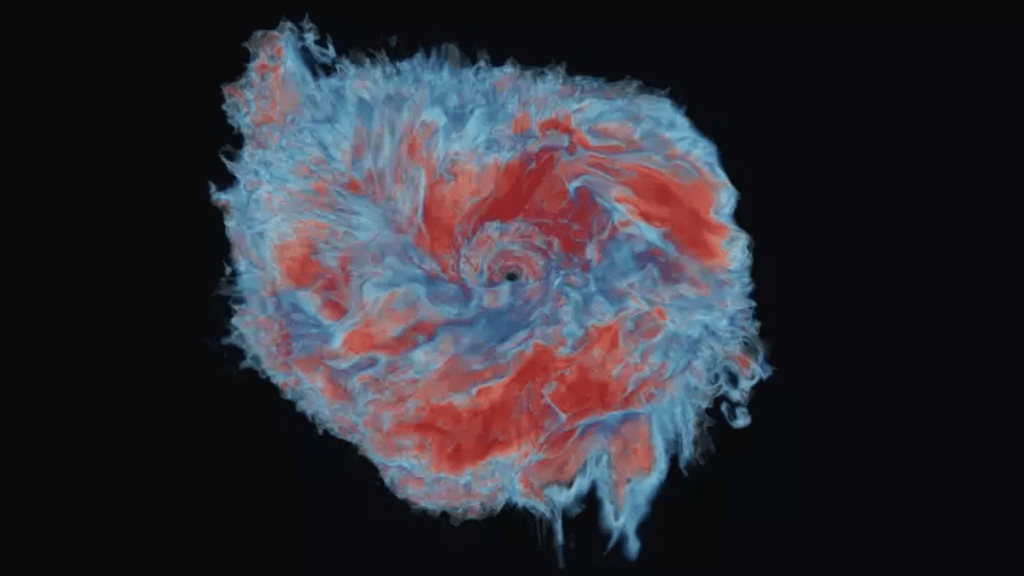
Gold mine of kilonova explosions forged by neutron stars crashing together (Image Credit: Space.com)
The gold that comprises the ring on your ring, the jewelry, and the uranium used as fuel in nuclear power plants is believed to come from the violent conditions created when two ultradense dead stars called neutron stars collide.
This collision between neutron stars also generates ripples in spacetime called gravitational waves, blasts of high-energy radiation called gamma-ray bursts, and a flash of light called a kilonova that can be detected here on Earth. Signatures from just such an event were detected on 17 August 2017.
Now, a team of scientists, including researchers from the Max Planck Institute for Gravitational Physics and the University of Potsdam, have used an advanced software tool to analyze the signatures of this kilonova explosion, adding in data from radio and X-ray observations of other neutron stars, nuclear physics calculations and findings from collision experiments conducted in particle accelerators here on Earth.
The effort could help better understand the exotic and turbulent environments generated when ultra-dense dead stars smash together to create the only sites scientists know of that can forge elements heavier than iron.
Related: A nearby kilonova explosion could threaten all life on Earth. But don’t worry
“Our new method will help to analyze the properties of matter at extreme densities. It will also allow us to better understand the expansion of the universe and to what extent heavy elements are formed during neutron star mergers,” team member and Max Planck Institute for Gravitational Physics scientist Tim Dietrich said in a statement.
Neutron star smash-ups as extreme cosmic laboratories
Neutron stars are born when massive stars reach the end of their fuel for nuclear fusion at their cores. This causes that core to collapse rapidly while the outer layers of the star are slewed away, leaving behind a body with a mass of between one and two times that of the sun squashed into a width equivalent to a city here on Earth, about 12 miles (20 kilometers).
As a result, the material that comprises a neutron star is so dense that a mere sugar cube-sized lump of it, when brought to Earth, would weigh as much as 3,000 Empire State Buildings or the entire human race. This dead star matter is also extraordinary because it is rich in neutrons, particles normally locked up in atomic nuclei with protons.
When neutron stars collide, sprays of this neutron-rich matter are launched into space. This creates an environment packed with free neutrons that can be quickly snapped up by other atoms, creating very heavy elements beyond the limits of the periodic table—something scientists called the “rapid capture process” or “r-process.”
These elements are unstable and decay into stable heavy elements like gold and uranium. This decay is accompanied by the emission of electromagnetic radiation—the light that forms the kilonova flash.
That means studying the kilonova occurring after a neutron star merger is the unique route to studying the physical processes that forge elements beyond iron, which can’t be created in the fiery hearts of even the most massive stars.
Thus far, only one merger of neutron stars in a contracting binary system has been recorded in its gravitational waves and electromagnetic emissions.
The event, designated GW170817, emerged from colliding neutron stars located 130 million light-years from Earth, which swirled together and merged, creating signals spotted here on Earth in 2017.
The team used their software to create a model of this event comprised of gravitational waves from the last few spirals of these neutron stars around each other before they collided, the gamma-ray burst launched as the collision occurred, and the kilonova emission emitted by the environment around the merger between days and years after it occurred.
“By analyzing the data coherently and simultaneously, we get more precise results,” team member and Utrecht University scientist Peter T. H. Pang said.
This allowed the team to precisely detail what happened during this neutron star merger that occurred over 130 million years ago and would have enriched its surroundings with gold, uranium, and other heavy elements.
The model that was developed by the team should be suitable for use in detailing the events that transpire when other neutron stars collide.
This investigation will be bolstered as the U.S-based Laser Interferometer Gravitational-Wave Observatory (LIGO), the Italy-based Virgo, and Japan-based Kamioka Gravitational Wave Detector (KAGRA) gravitational wave detectors receive upgrades ahead of future observing runs that will “hear” even more ripples in spacetime launched by neutron star collisions.





